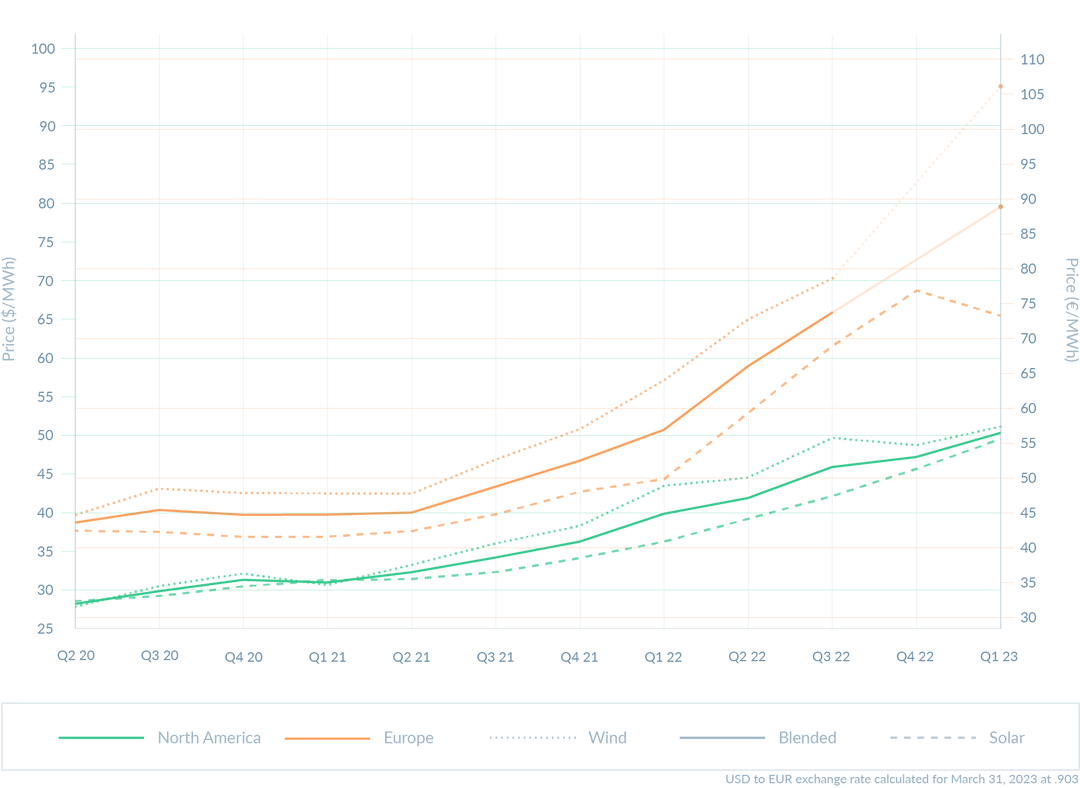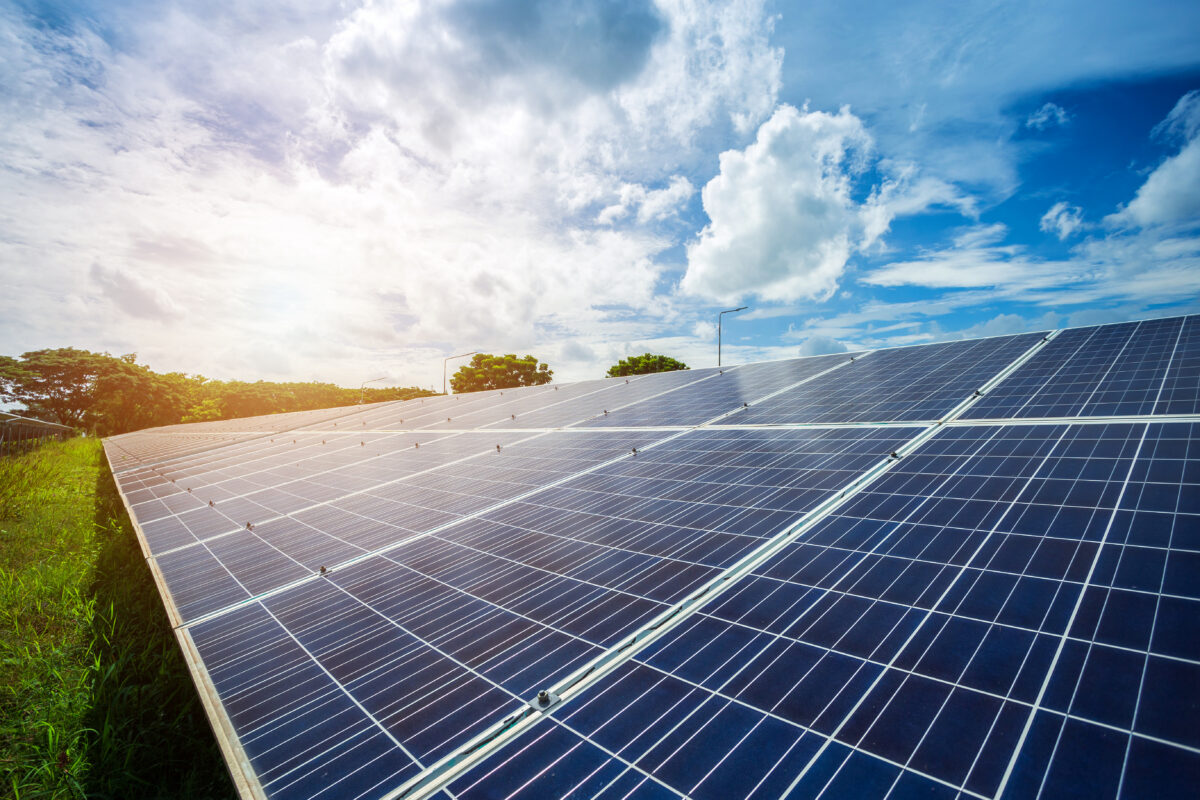Solar power purchase agreement (PPA) pricing in the U.S. may be stabilizing, reports LevelTen Energy. After three years of sequential price increases each quarter, PPA contract prices declined 1% from Q1 to Q2, 2023. Solar PPA prices have increased 25% year-over-year in Q2.
“While 1% is a small change, this is the first time since Q1 of 2020 that we’ve seen the market-averaged continental solar PPA price decrease,” said Gia Clark, senior director of strategic accounts at LevelTen Energy. “It’s a promising indication that conditions are starting to stabilize.”
Developers have been challenged by inflation, supply chain complexity, rising interest rates, and regulatory uncertainty over the last few years. Despite these issues, the industry is a year removed from the Inflation Reduction Act passage, and developers are beginning to incorporate benefits from the legislation into their strategies.

Increased mobility in the solar supply chain is also likely contributing to the Q2 solar PPA price trends, said LevelTen. Over 12 GW of PV modules crossed the border into the U.S. during Q1 2023 alone, compared to only 29 GW imported during all of 2022, reported Wood Mackenzie.
Meanwhile, wind PPA prices continue to climb due to low supply, rising 13% in Q2.
“As a result of permitting and interconnection issues, fewer wind projects are entering the market compared to solar,” said Clark.
However, LevelTen expects wind demand to resume. “Repeat buyers are looking to wind to diversify their portfolio, and those with hourly matching targets rely on wind to generate clean electricity when solar can’t.”
In the first half of this year, LevelTen Energy tracked 11.9 GW of clean energy capacity contracted via PPAs in North America, setting 2023 on track to beat the 22.5 GW signed in 2022.
There is a tidal wave of demand for clean energy on the horizon, not only from corporations, but also from utilities and retail electricity providers. The market share of electric vehicles continues to grow both for personal use and in fleet adoption, artificial intelligence is putting new demand on data centers, and green hydrogen producers will require carbon-free electricity at all hours. It will be increasingly difficult to find clean energy projects that have obtained interconnection approval. Corporations need to act now to secure PPAs that will help them reach their emissions reduction targets, before competition becomes even more fierce.” Gia Clark, senior director of strategic accounts, LevelTen Energy.
Clark said that while it is encouraging to see a calming in PPA prices, it is unlikely that price trends will fall significantly. Instead, Clark expects incremental levelizing with occasional declines.
Prices across regions remained flat, except for ERCOT, which raised 14% due to regulatory uncertainty.
“Regulatory threats during Texas’ 88th legislative session created an environment of profound uncertainty for developers, pushing up prices. While the worst proposals failed, this session made clear that the opponents to renewable energy have a strong influence in Texas,” said Clark.
LevelTen reports PPA pricing based on the P25 metric, which represents the 25th percentile of prices. All pricing data reported are based on developer contract offers, not transacted PPA prices.
“This quarter’s price stabilization after years of increasing prices make now a good time to procure,” said Clark. “It’s still a competitive environment, so buyers are most likely to succeed if they move quickly. LevelTen is committed to developing innovative ways for more clean energy deals to get done faster.”
This content is protected by copyright and may not be reused. If you want to cooperate with us and would like to reuse some of our content, please contact: editors@pv-magazine.com.









By submitting this form you agree to pv magazine using your data for the purposes of publishing your comment.
Your personal data will only be disclosed or otherwise transmitted to third parties for the purposes of spam filtering or if this is necessary for technical maintenance of the website. Any other transfer to third parties will not take place unless this is justified on the basis of applicable data protection regulations or if pv magazine is legally obliged to do so.
You may revoke this consent at any time with effect for the future, in which case your personal data will be deleted immediately. Otherwise, your data will be deleted if pv magazine has processed your request or the purpose of data storage is fulfilled.
Further information on data privacy can be found in our Data Protection Policy.